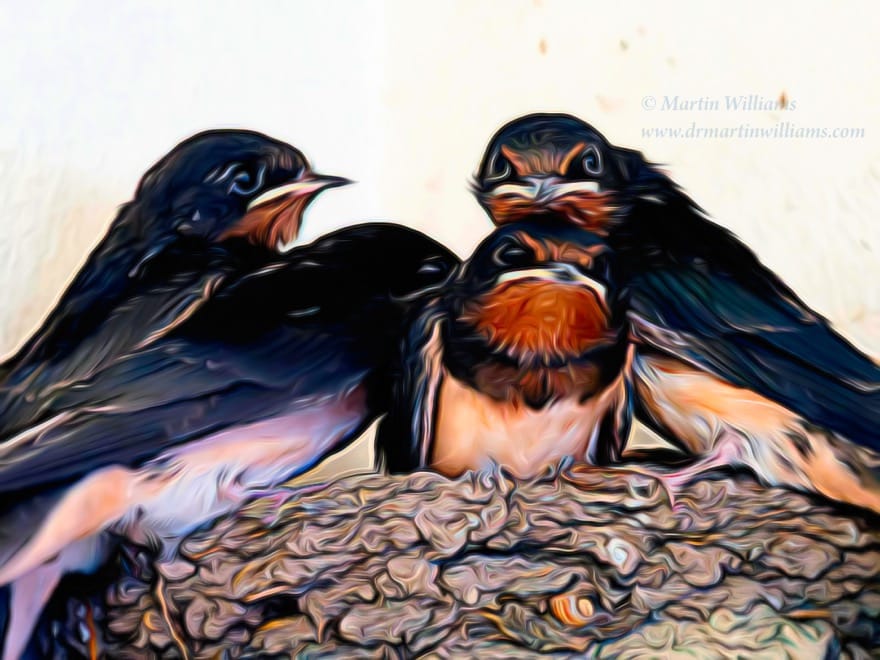I live on Cheung Chau, a small island in southwest Hong Kong – and became very used to it hosting many nesting pairs of Barn Swallows, which start arriving around mid-February, and stay till late summer. Been this way since late 1980s as I recall; the swallows are obvious as nest in sheltered spots just above entrances to shops and cafes etc. Last year, however, I thought fewer arrived; and this spring just paltry numbers: here, a few notes with ideas on why such a dramatic decline.
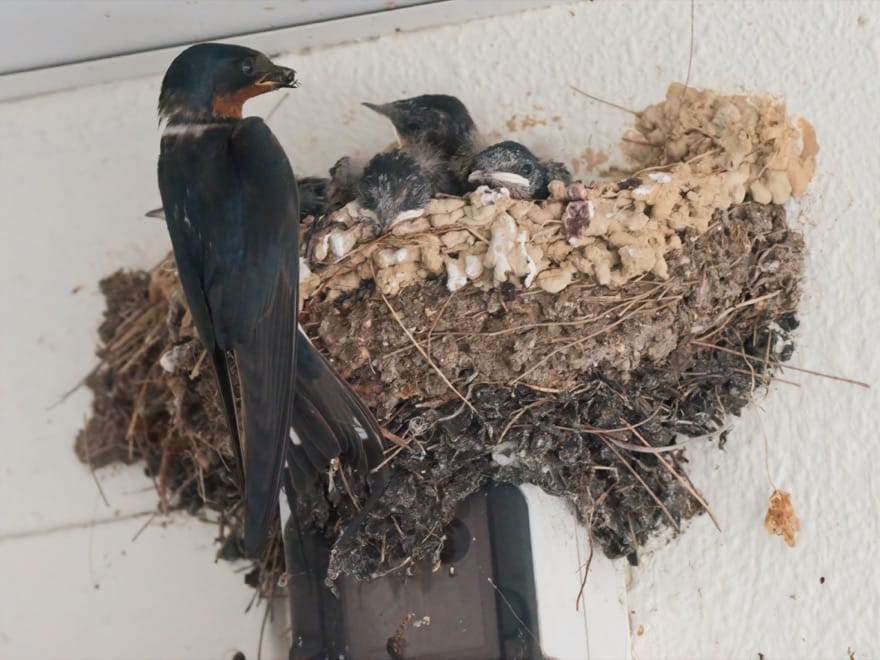
Firstly, I haven’t counted the nesting swallows before. Almost took them for granted – by this time of year, there would be males singing from perches along streets, birds occupying nests including in very obvious places. For instance, maybe five or more nests around the government building with facilities such as the market; also nearby streets – yet this spring, not noticing at nests here. [I’ve waited lest more arrive; plan to do a little more investigating in a week or two, make doubly sure that just not a result of very delayed arrivals.] I’ve seen reports from Roger Muscroft of similar happening in Sai Kung area, east Hong Kong.
So, if this severe decline is indeed real, what might be happening? Could be a variety of things – I thought of climate change, serious issues in the winter quarters, even heavy-handed spraying of pesticides vs mosquitoes in wooded areas fringing the village. Right now, I think climate change; but here, a quick look at each of these – and of course not an exhaustive list.
Pesticide spraying maybe not key culprit?
After cases of dengue fever on Cheung Chau in autumn 2018, the government began intensive anti-mosquito spraying, including fogging with pesticides, notably cypermethrin. To me, way over the top – and I believe it impacted local insect populations, in turn surely affecting insectivorous birds, perhaps killing some of the latter. I emailed the Food and Hygiene Department to complain, several times – attaching some papers on cypermethrin impacts on wildlife; and partly in response, rather less spraying, and more use of bti toxin – which is specific to mosquitoes, especially their larvae.
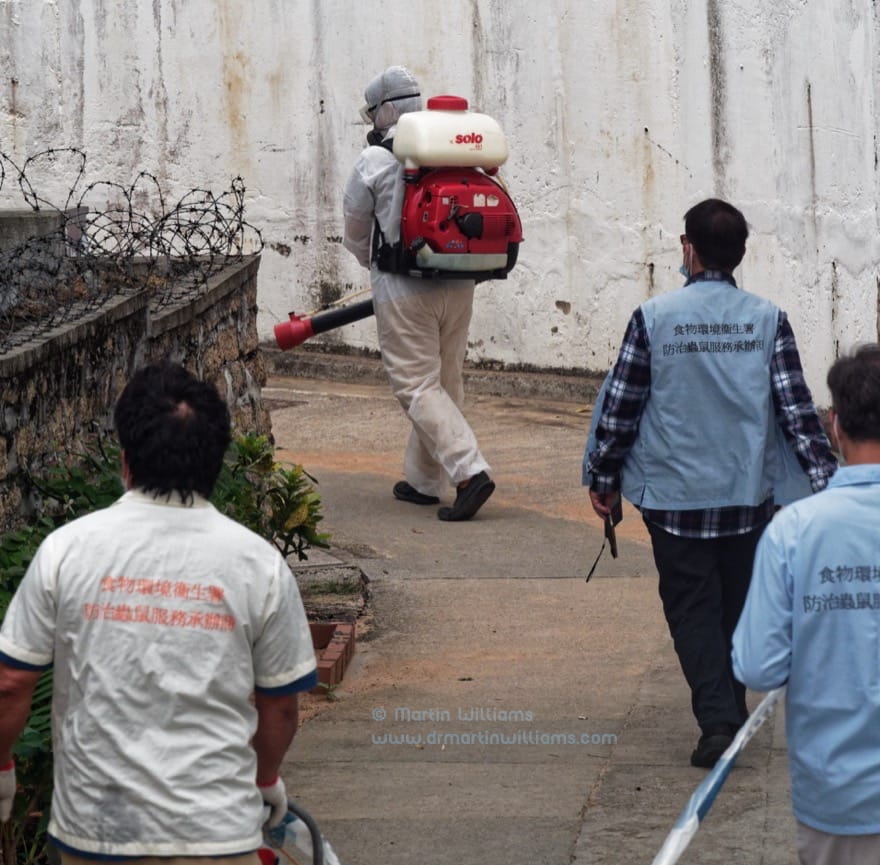
But I wasn’t so confident there was a significant effect on Barn Swallows here; they might also feed over unsprayed parts of Cheung Chau, nearby Lantau, mainly consuming untainted insects. And decline also noted in Sai Kung, where there hasn’t been such intensive spraying [that I’ve heard of]. So for me, not prime suspect.
Problems in winter areas reducing Hong Kong population?
The Cheung Chau – and Sai Kung – nesting Barn Swallows are summer visitors; spending winter somewhere to the south of us.
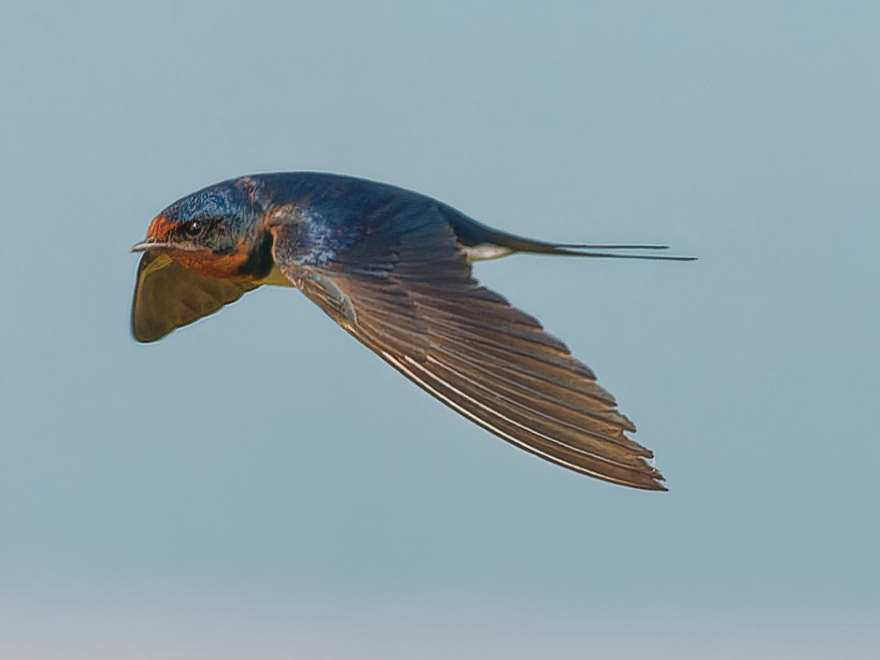
In winter, as in much of the year when not at nests, Barn Swallows favour roosting together, such as in reedbeds, and I’ve previously learned of numbers at roost[s] in Thailand being severely decreased by trapping – for instance, “there has been a drastic decline in the Bung Boraphet swallow population from hundreds of thousands reported around 1970 to maximum counts of 8,000 made in the winter of 1980-1981” [trapping maybe the chief cause; reedbeds also destroyed for lotus cultivation].
While I hadn’t noticed such reports in recent years, after I posted this article on Facebook, Yong Ding Li and James Eaton commented that trapping – for food – still occurs in southeast Asia, including Vietnam and Laos.
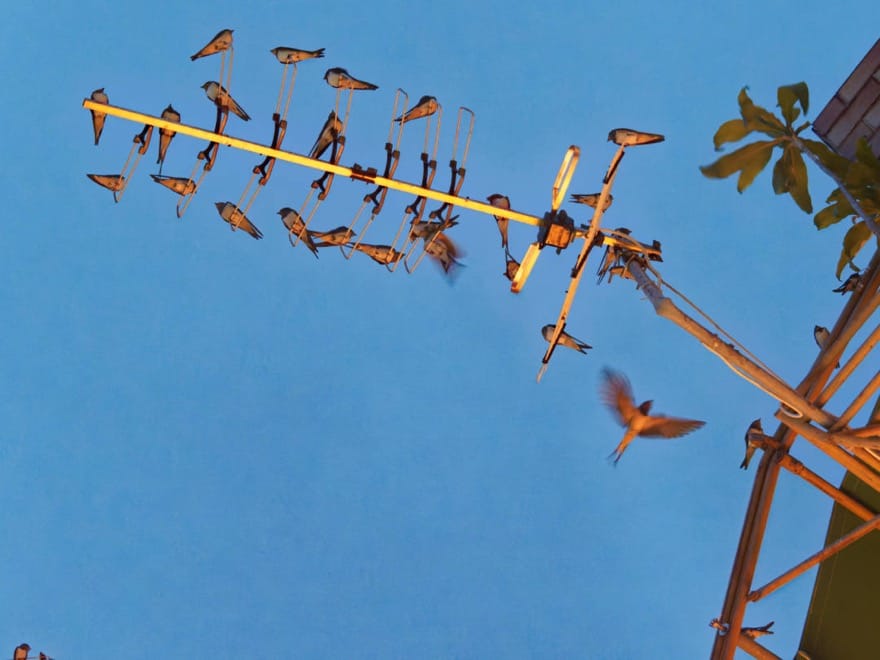
With a little online searching, and I found a paper on Barn Swallows in Malaysia, where they roost in towns – on balconies, wires and so forth (just like a summer, post-breeding roost on Cheung Chau). This focused on a town, Bentong; where “Modern peak numbers in October 2015, at 63,290 swallows, were 72% of the November peak of 1967 (87,880)“. So a decline was evident in Bentong – with reasons unclear, though maybe related to habitat damage reducing feeding areas, and potentially competition with swiftlets that had become far more abundant thanks to farming for their nests.
But, that’s a decline, not plummeting numbers. Which is surely a good thing, as it may mean the changes in Hong Kong are not widespread, throughout much of the Barn Swallow’s massive range in east Asia.
Climate change may be impacting Hong Kong’s nesting Barn Swallows
Hong Kong is at – or just north of on this map – the southernmost limit of the Barn Swallow’s breeding range in east Asia. And this surely means that – even though colonies here seemed to be thriving – Hong Kong is just within the temperature tolerance for nesting Barn Swallows: if the temperature rises, this tolerance would be exceeded.
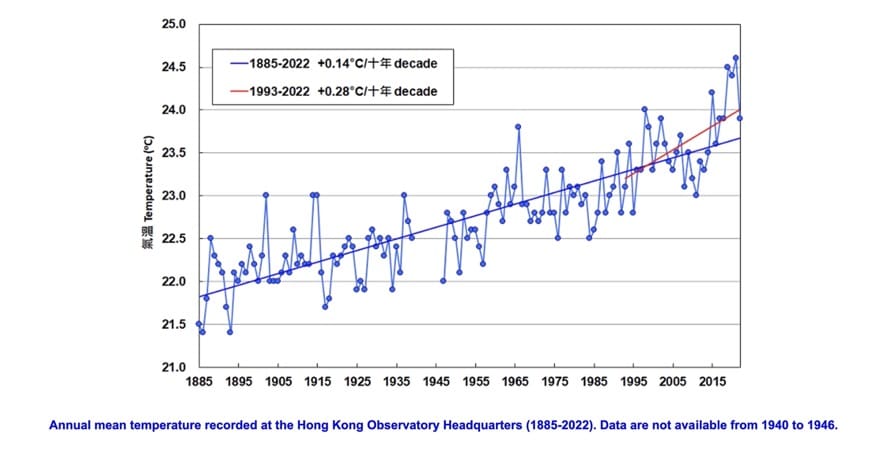
And of course, temperatures are rising; here in Hong Kong, “The average increasing rate was 0.28℃ per decade during 1993-2022” according to Hong Kong Observatory.
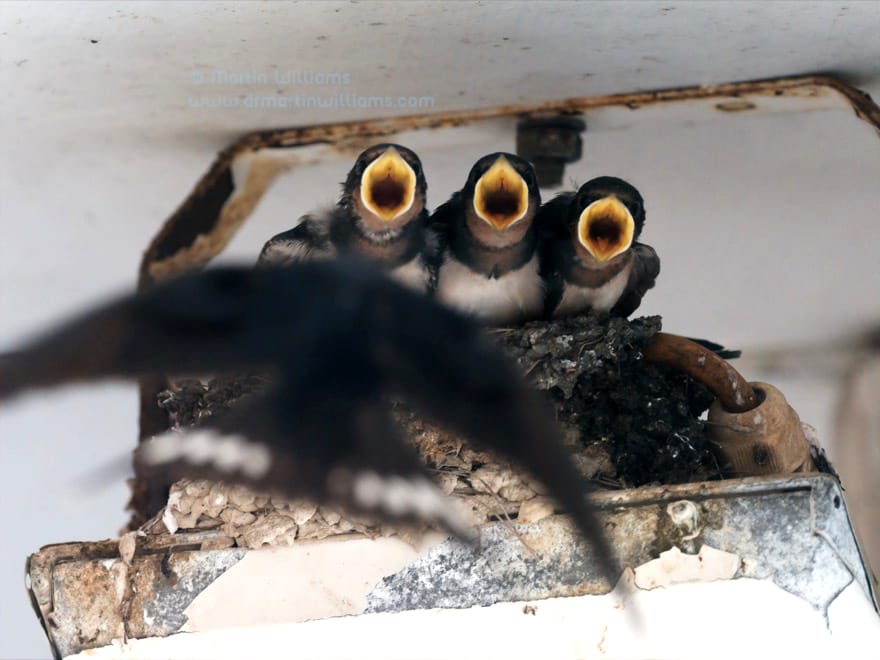
And higher temperatures have recently been found to reduce breeding success of Barn Swallows in China:
We monitored the breeding activities of two barn swallow populations simultaneously in both tropical and temperate regions in China from 2019 to 2021 and investigated the effects of weather conditions on the reproductive success of the barn swallow in the study sites. We found that the reproductive success of the barn swallow at the tropical site [Zhanjiang, west Guangdong] was lower than that at the temperate site, i.e., swallows at the tropical site laid fewer eggs and had fewer nestlings/successful breeding attempts than swallows at the temperate site. Temperature, rather than rainfall, influenced the breeding performances of barn swallows at both sites. In particular, nestling survival decreased with increasing temperatures at the tropical site, but not at the temperate site. We suggest that researchers pay more attention to the reproduction and population changes of the barn swallow in the tropics in the context of climate warming.
Reproductive Success of a Tropical Barn Swallow Hirundo rustica Population Is Lower Than That in Temperate Regions
And here, perhaps, the main explanation for the swallows mostly vanishing from Cheung Chau and Sai Kung. The climate has warmed so much that Hong Kong is no longer suitable for them.
Other birds’ ranges are also undergoing major shifts with climate change; it’s perhaps most obvious when species arrive to breed, perhaps becoming common, in northern areas where they did not breed or even occur before – much like Chinese Bulbul and Little Egret spreading into northeast China in recent years. While often, birds vanish “quietly”; it’s less striking when species we’ve been used to having around dwindle in numbers, maybe stop occurring.
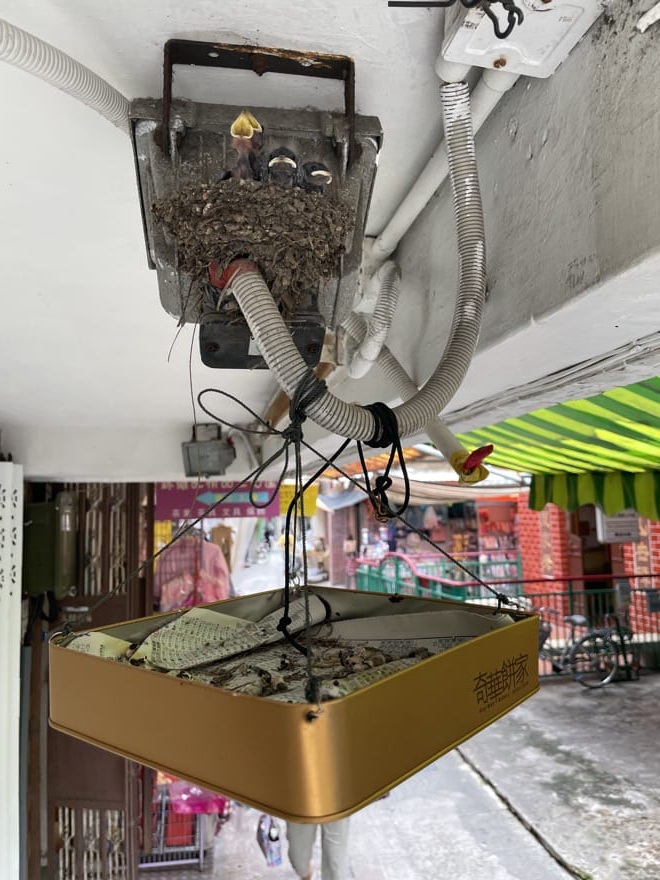
The Barn Swallows, however, leave more of a “hole” – they’ve been (and hopefully will remain) part of village life here, even cared for by shopkeepers who might put up trays for them to nest on, and other trays to catch their droppings.
Will numbers recover? – might there be a sudden arrival in the next few days, to negate this article, or a rebound next year or the year after that? Perhaps. But climate change is inexorable; and if the heat is indeed on too much it doesn’t seem the future is bright for Barn Swallows here. Even arriving and nesting earlier in spring doesn’t seem a solution; insects still take some time to become active, plus weather is more erratic, with less predictable cold surges, dry spells etc from year to year.
Worldwide, Barn Swallows Abundant and of “Least Concern”
It’s worth noting this is a local decline I’ve written of; hopefully the situation here is atypical of what’s happening across most of the Barn Swallow’s range in east Asia. I’ve learned of numbers falling in Canada, giving cause for concern; but overall, while there may be some decreases, Barn Swallows remain abundant and their status is rated Least Concern by Birdlife International. If that situation changes for the worse, well that’s the time to grab your spot on a Musk spaceship to fantasyland, as we’ll all be fucked.
